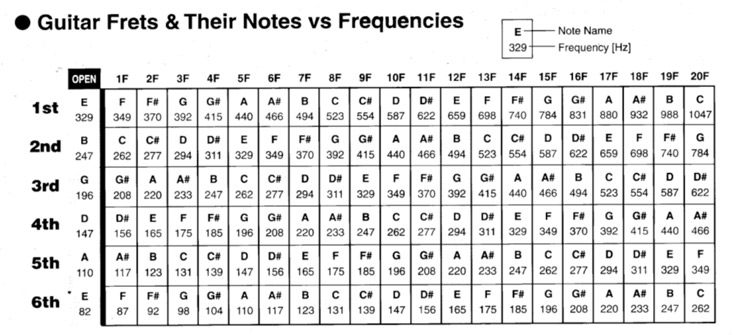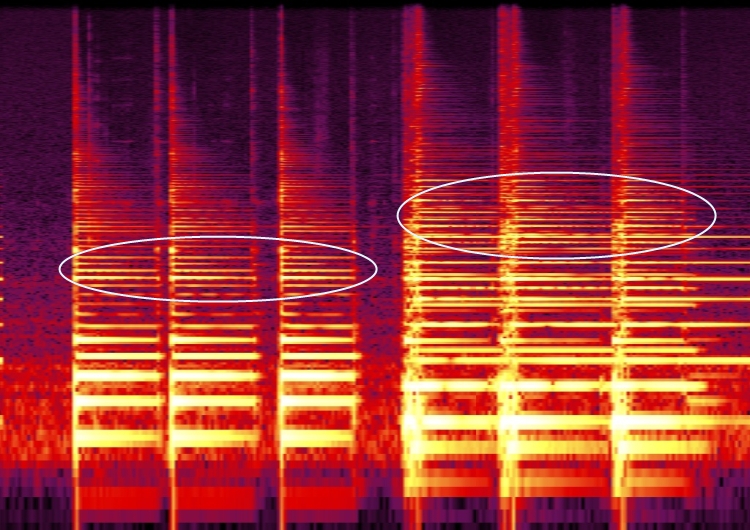
The so-called "Popsicle Brace"
First, let's have some pictures of the wicked thing:

Our first problem is what to call the brace! In the first picture, it is incorrectly (??) labeled "top plate". Some folks call it a "upper transverse graft". On the StewMac Martin D-28 blueprint, it's called "T-6". Common people call it the "popsicle brace" or "tongue depressor brace", or worse. You'll note that the brace's grain runs perpendicular to the top grain and that the brace runs pretty much clear across the upper bout. The brace does not appear in pre-1939 Martin D's, but does in post 1940 D's. As people search for the (mythical?) tone of those old guitars, they examine every aspect of them and the popsicle brace comes under scrutiny. The brace was evidently added to help prevent cracks appearing alongside the fingerboard. Since the first D was made in about 1934, problems must've crept up pretty quickly and Martin must've been pretty quick on the ball because by 1940, the brace was there. Maybe heavy gauge strings contributed to the problem? Whatever the reason, we now have the popsicle brace. Today, most stock Martins comes with the brace, although at least one- the 1995 D-18 Golden Era, do not. Many, many small builders do not use the brace, including Dudenbostel, Lucas, Collings (by request and on the CW models), Sams, Bourgeois, and many more.
Why the top cracks is the next question. One hypothesis is that the fingerboard and top spruce expand at dramatically different rates. Since the spruce is held captive by the glued-down fingerboard, it tends to crack. I guess that's possible, but I wonder if having the bottom of the spruce glued to a brace doesn't actually contribute to the cracking. If one side is held captive and the other side is flexing (picture a book- the spine holds the pages together), would this cause cracks? Compare this to a piece of wood allowed to flex on both sides (a ream of paper with no spine). Another hypothesis is that downward pressure from the fingerboard causes cracks. However, anyone who has done neck resets knows that a) you have to clamp the fingerboard down to the top, b) you can string up the guitar and still have to clamp the fingerboard down. Perhaps it's actually upward pull (the fingerboard trying to pull back up) that cracks the top?
I propose that the cracks are caused primarily by the neckblock leaning forward. There is a lot of pull on the neck and it is focused on the soundboard side of the neckblock. If the neckblock leans forward under this stress, it will a) let the fingerboard push down against the top, b) cause the spruce under the fingerboard to shift forward into the soundhole. Indeed, when fingerboard cracks are severe, we usually see the soundboard falling into the soundhole, and we also see distortion of the sides where they attach to the neckblock. I demonstrated distortion of the sides of the guitar using "Cathy", the cardboard guitar. Without sides, Cathy wanted to collapse between the waist and neck block and the neckblock did indeed try to rotate forward. Thus, I think it's more likely that the cracks are caused by this force.
Without a popsicle brace, the top is attached only by the shear strength of the spruce fibers and by a 1/2" x 2" glue area where the top overlays the soundhole brace (Number 1 brace above). With the popsicle brace, we get an additional 1" x 2" glue surface directly under the fingerboard, and we get the resistance of the rest of the brace. So, the popsicle brace isn't a terrible thing, except for the fact that it deadens the upper bout area of the soundboard. And, the tops still crack.
Following is a collection of pictures showing stock Martins with both popsicle braces and fingerboard cracks.
As you can see, the top still cracks. It also tends to crack right at the "point" of the neck block which seems to support the idea of a rotating neck block. All these cracks are underneath the fingerboard, not alongside the edge.
^^^^^For reference, here is the inside of an original 1929 000-18.^^^^^
^^^^^After removing the popsicle brace, my solution is to add a trapezoidal brace with beveled edges to prevent stress risers. I sign and date this brace and usually add information. In this case, there was already a crack along the fingerboard and this brace will support that. My brace wedges in tightly between the neckblock and soundhole brace. If my hypothesis of the leaning neckblock is correct, this brace should add more strength than the popsicle brace. As you can see, I get a lot more glue surface in this area, and I've totally covered the fingerboard area cracks. Yet, the upper bout is still free to vibrate.
Only time will tell whether or not this is a good idea, but the fact remains that the popsicle brace does not prevent fingerboard area cracks. It may certainly reduce the severity of damage, but so should my brace. In fact, many repairmen (including me) use a brace just like this to repair slid-forward tops. That is, in fact, what's going on in the photo above. Therefore, what I'm trying to do here is effectively "pre-fix" the problem.
Finally, many guitars come stock without the popsicle brace- aside from the pre-40's Martins, Martin's own 1995 D-18 Golden Era (the one with the Sitka top, not to be confused with the newer version), Dudenbostel, Lucas, Lanham, Proulx, Bourgeois, and many Collings models do not have popsicle braces. Check out this Martin D-16:
Personally, I really like the A-frame bracing shown here. I think the A offers excellent support and the big neck, while it might be over-kill only adds to the support. Yet, the upper bout is free. It's a great design, if you ask me.
Sound:
The effect of the popsicle brace on sound is hotly debated. Some say "no difference", others hear a difference. I think it depends on the overall state of the guitar, your picking technique, and other factors. I like to use the race-car analogy; great suspension isn't much use if you use cheap tires. It all has to work together. My hypothesis is that the upper bout area responds to vibrations from the neck, not the bridge. People tend to focus on the bridge and yes, that's where most of the sound comes, but there are a lot of vibrations in the neck and these are transmitted into the box (try rubbing your hand up and down the neck and putting your ear to the box...). I have found that work to the neck (good nut, light tuners, tight frets) transmits to the guitar. And where does the neck attach? To the upper bout. The fingerboard extension lies right on the upper bout and the neck itself attaches to the neckblock, which I've accused of trying to rotate forward, which in turn means that it's under some stress. Stress and vibration and sound all go hand-in-hand together. So, if you have heavy tuners, a plastic nut, and loose sloppy frets over a popsicle-brace, then, yes, the upper bout is a dead area. But, it doesn't have to be.
Lastly, check out these plate vibration patterns. Take a look at the vibrations that occur in the popsicle brace area: 148-221 Hz, 314-438 Hz. Compare these to the frequencies of guitar notes. You should see that these notes fall mostly on the A and B strings:

I did a frequency spectrum analysis with an iPad and this is what I found. First, let's look at a Telecaster to see if the iPad/program can even identify known changes in sound. I recorded the low E of the guitar with the tone pot all the way off and on.
The iPad/app is capable of recording differences. You can see that the decay of the treble is considerably longer with the tone pot full on as opposed to full off, while the lows remain unchanged. That's what we should see as that's what a tone pot does.
Now let's look at a D-18 GE with the popsicle and without.

The above is the stock GE with the popsicle in. I'm plucking the strings from bass E to treble E. The strong low harmonics on the treble strings is due to the iPad/app's limitations- it doesn't go low enough for the low E fundamental.
Here's the same thing with the popsicle brace out- same strings, same everything.

Note how much stronger the upper harmonics are in this case. Compare this to the Telecaster and basically what the popsicle brace removal does is open the tone pot to "wide open".
So, according to both my ears and this primitive frequency analysis, removal of the popsicle braces gives more upper harmonics. To my ear, this sound like a more "open" or "airy" sound. Volume is not dramatically increased, but richness and complexity is.